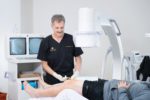More than Skin Deep: Kansas City’s Fight to Raise Awareness of Skin Lupus

Article by David L. Kaplan and La Tanya Pitts-Lipprand

David L. Kaplan, MD

La Tanya Pitts-Lipprand Founder and Executive Director
For many living with lupus, the first signs of the disease show up on the skin. Cutaneous lupus erythematosus (CLE), a form of lupus that primarily affects the skin, often appears before a formal diagnosis of systemic lupus erythematosus (SLE) is ever made. These red, scaly, and sometimes painful lesions are more than surface deep—they represent a chronic autoimmune condition that can significantly impact the quality of life.
Here in Kansas City, Marlene’s Kaleidoscope Foundation is helping to “start the conversation” on CLE. The local nonprofit, founded by lupus survivor La Tanya Pitts-Lipprand, works to provide education, advocacy, and community-based support, particularly in underserved populations where lupus often goes undiagnosed or misdiagnosed.

• Red, thick, and often scaly rashes and sores that may burn or itch. • A butterfly-shaped rash on the face (malar rash). • Skin lesions that appear or worsen with sun exposure. • Skin itching or irritation. • Skin swelling (edema), especially around your eyes. • Hair loss related to scarring on your scalp. • Rashes might appear purple or brown on darker skin tones. • Patches of lighter and darker pigment on your skin
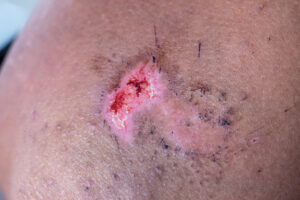
Who Is Most Affected by CLE?
CLE tends to appear in individuals between the ages of 20 and 40, with a mean onset age of 43. While lupus is more common in women, CLE shows a narrower gender gap. The condition disproportionately impacts Black, Hispanic, Asian, and Indigenous populations—communities that also face systemic barriers to healthcare.
In the U.S., African Americans are 5.4 times more likely to develop chronic cutaneous lupus than white individuals. Black women have the highest incidence rate (15.9 per 100,000), followed by Asian/Pacific Islander and Hispanic women. These disparities are particularly visible in urban centers like Kansas City, where access to timely dermatological care and autoimmune disease
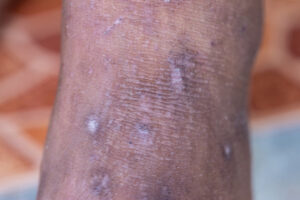
specialists can be limited.
“Marlene’s Kaleidoscope is addressing these gaps by meeting people where they are—through education, culturally relevant outreach, and community events,” says Lipprand. “We want people to know what skin lupus looks like and that help is available.”
Understanding Symptoms and Triggers
CLE can cause many symptoms—thick, scaly rashes, burning or itching, and sometimes permanent scarring. These flares can persist for months and often occur in areas exposed to sunlight, such as the face, scalp, and arms.
The disease is also influenced by a number of external triggers. Certain medications, including some blood pressure and antifungal drugs, can exacerbate symptoms. Smoking is a major factor, known to
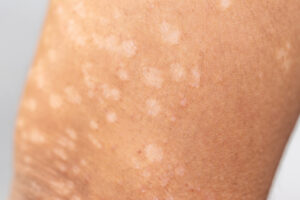
worsen inflammation and interfere with treatment outcomes. Even exposure to UV light through clouds or windows can provoke a flare.
“Photoprotection is critical,” Dr. Kaplan emphasizes. “Using sunscreen every day, wearing protective clothing, and avoiding peak sun hours are simple but powerful steps.”
Treatment and Lifestyle Changes
Managing CLE typically involves a combination of topical and systemic therapies. Corticosteroids and calcineurin inhibitors help control local inflammation, while oral antimalarials like hydroxychloroquine are used for more severe cases. Promising new treatments, including deucravacitinib and repurposed eczema medications, are showing success with fewer side effects.
Beyond medication, lifestyle choices play a key role. An anti-inflammatory diet—rich in fruits,
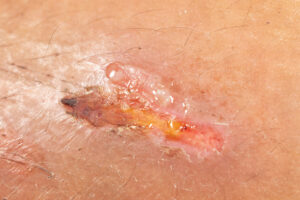
.
vegetables, omega-3 fatty acids, and whole grains—can support immune health. Avoiding processed foods, staying hydrated, reducing alcohol, and quitting smoking all contribute to improved outcomes.
Looking Ahead: Kansas City’s Role in the Movement
Although there are no FDA-approved treatments specifically for CLE, research is ongoing. Advocacy organizations like Marlene’s Kaleidoscope are pushing for greater awareness and more inclusive healthcare strategies that reflect the communities most affected by the disease.
“Our mission is rooted in equity and education,” says Lipprand. “Kansas City deserves to be a hub for lupus awareness, research, education, and support—especially when the impact is so profound here.” La Tanya Pitts-Lipprand, Founder & Executive Director
With local partnerships, ongoing education campaigns, and a growing network of community allies, Kansas City is helping to change the narrative around lupus—one conversation at a time.
For more information on David L. Kaplan, MD please call 913.469.1115 or visit apdkc.com. For more information on Marlene’s Kaleidoscope and La Tanya Pitts-Lipprand, please email llipprand@mk4lupus.org or visit mk4lupus.org.




